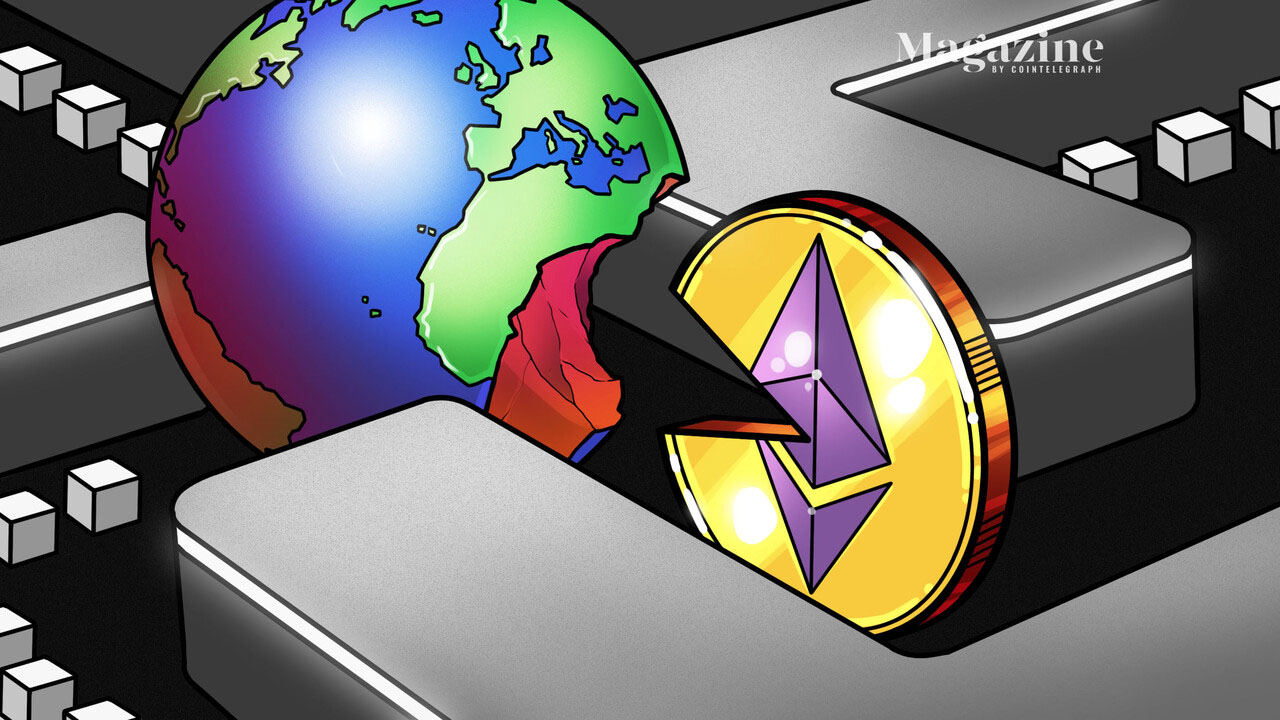There’s a version of the future that’s tantalizingly possible in which Ethereum becomes the base layer for pretty much everything.Recent advances in a
There’s a version of the future that’s tantalizingly possible in which Ethereum becomes the base layer for pretty much everything.
Recent advances in a technology called zero-knowledge Rollups — from StarkWare, Polygon and zkSync — enable the blockchain to move from fewer than 20 transactions per second to… well, an infinite number of TPS.
In theory, it would allow the entire world’s financial system to run on Ethereum.
“I think it’s theoretically possible,” explains Declan Fox, product manager for rollups at Consensys, which provides Ethereum infrastructure and apps like MetaMask. “We have the technology to achieve that kind of throughput necessary.”
“With recursive rollups and proofs, we theoretically can infinitely scale.”
He adds it obviously hasn’t been proven in production yet, “so that’d be the next step.”
The tech is so new and so promising that soon after it became viable, Ethereum rearranged its entire roadmap to take advantage of it. This week’s Merge is arguably the least interesting bit of the coming changes.

One of the pioneers of zero-knowledge proofs — or validity proofs as he prefers to call them — is StarkWare co-founder Eli Ben-Sasson. He worked on the problem for two decades, helping nurture it from an abstract theoretical concept — “something that is completely galactic and impossible, not enough atoms in the solar system to record even one such proof” — down to something that can efficiently be generated on a laptop.
At its most basic, the process employs high-level mathematics to generate a tiny validity proof that verifies that a whole bunch of other transactions has been carried out correctly. Instead of putting all the transactions on the slow and creaky blockchain, you just record one proof in a transaction.
“This technology lets you send a very succinct proof that asserts that a computation was done correctly — even when you weren’t watching, which I think is the most magical aspect,” he explains.
“What validity proofs deliver, they deliver integrity; they let me know that the right thing was done by others — that someone processed 10,000 transactions, even when I wasn’t watching, and they didn’t steal my money. That’s what they deliver.”
Tens of thousands of transactions being compressed into a single transaction on Ethereum is impressive enough, but the magic doesn’t stop there.
Validity proofs work a little bit like fractals — the closer you look, the further into the distance they stretch. You can take 10 validity proofs — each representing 10,000 transactions — and generate an entirely new validity proof verifying that those other 10 proofs are correct.
Suddenly you have 100,000 transactions rolled up into one. This is called a “recursive proof,” and you can just keep doing it over and over again.
“It is a proof of proving. And so, you can further compound the savings because each time you generate a proof, you’ve compressed the process of verifying computation. So, basically, you can compress again and again.”

Our interview is held the same week that StarkWare puts recursive proofs into production. The zkSync project, which uses the slightly different zkSNARKS instead of zkSTARKS starks, has implemented its own version of recursive proofs.
StarkWare has already rolled up as many as 600,000 NFT mints into a single transaction on ImmutableX, and Ben-Sasson says they’ll be able to cram 6 million NFTs into a single transaction soon and then “60 million with more engineering and tweaking.”
While there are still some problems to overcome, this type of scaling capability puts crypto back in the game for everyday payments and microtransactions — such as paying a few cents to read a paywalled article rather than being forced to take out a monthly subscription. Long hampered by high fees and 10-minute wait times for payments to go through, crypto finally has the opportunity to fulfill Satoshi Nakamoto’s original vision of becoming peer-to-peer cash.
Ethereum co-founder Vitalik Buterin told attendees at last month’s Korea Blockchain Week that scaling meant payments were back on the table:
“It’s a vision that has been, I think, forgotten a little bit, and I think one of the reasons why it has been forgotten is basically because it got priced out of the market.”
Do you even need another blockchain, bro?
Infinite scaling on Ethereum means some people — mostly Ethereum people, to be fair — can no longer see the justification for competing layer-1 blockchains like Solana or Cardano. Delphi Digital calls this the “Monolithic” view of crypto’s future as opposed to a “multichain” view.
It doesn’t necessarily mean there won’t be any competitors, just that it’s likely that there will be far fewer of them as the space coalesces around a single…
cointelegraph.com
